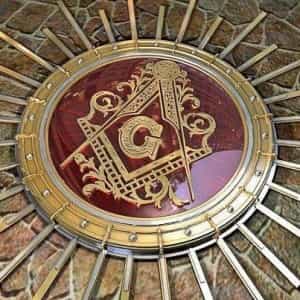Freemasonry, is a universal institution, essentially ethical and philosophical, whose traditional structure is constituted by an educational and symbolic system, but where does Freemasonry come from and on what basis? Here we present some basic information so that you know and understand what this institution is about.
How did Freemasonry Start?
Emerged in Europe between the late seventeenth and early eighteenth centuries, modern Freemasonry has often been described as a particular system of morality illustrated by symbols.
It presents itself as a training tool, with a particular method that, based on the symbolism of construction, allows its members to develop their ability to listen, reflect and dialogue, to transmit these values to their environment.
When did Freemasonry begin?
One of the most important legends of Freemasonry history attributes to Hiram Abiff, mythical architect of Solomon’s Temple in Jerusalem, the foundation of the Masonic order.
Some texts go back the origin of Freemasonry to times of antiquity, and come to consider as founders different biblical figures, such as Tubal-cain, Moses, Noah or Adam himself.
More realistic, but still in the area of the mythical, various authors have attributed this origin to the builders of the pyramids in ancient Egypt, to the Roman Collegium, to the order of the Templars, that of the Rosicrucians or to the humanists of the Renaissance.
The most accepted hypothesis affirms that Freemasonry origin comes from the guilds of medieval builders of castles and cathedrals (the so-called operative Freemasonry), which evolved into communities of speculative and intellectual type, keeping part of their ancient rites and symbols.
This process, which could have started at different times and places, culminated in the early 18th century.
The organization that would be known as the Freemasons would first emerge in 1717 when four lodges decided to join as one in St. Paul’s churchyard London and Anthony Sayer became the first Grand Master of the organization.
The Freemasons would agree to have meetings four times a year. The organization first started with commoners being Grand Masters but in 1721 there was a change in the system where it should be someone of nobility to take on the roles as leader of the Freemasons.
Two years after the decision, the first constitution concerning Freemasonry would be composed and establishing rules of the organization.
However, there is a division of masonry world into two main currents.
The conditions accepted by the two main currents to recognize the regularity of a Masonic obedience are:
• It has a legitimacy of origin: That its constitution has been sponsored by some other regular Masonic organization. In this sense, initial regularity is often considered to emanate from the former Grand Lodge of London and Westminster.
• Respect for the capital values and principles established in the founding documents, specifically the so-called Anderson’s Constitutions, published in 1723.
What is Freemasonry?
Freemasonry, from the French franc maçonnerie, is a secret organization that brings together individuals grouped into entities known as lodges under a precept of fraternity.
Who was the first Mason in the world?
The first known Freemason in American history was John Skene. He had entered the Number 1 Lodge in Aberden, Scotland in 1682. That same year he emigrated to North America, settling in Burlington, New Jersey, of which he would become Lieutenant Governor in 1685 and until his death in 1690.





